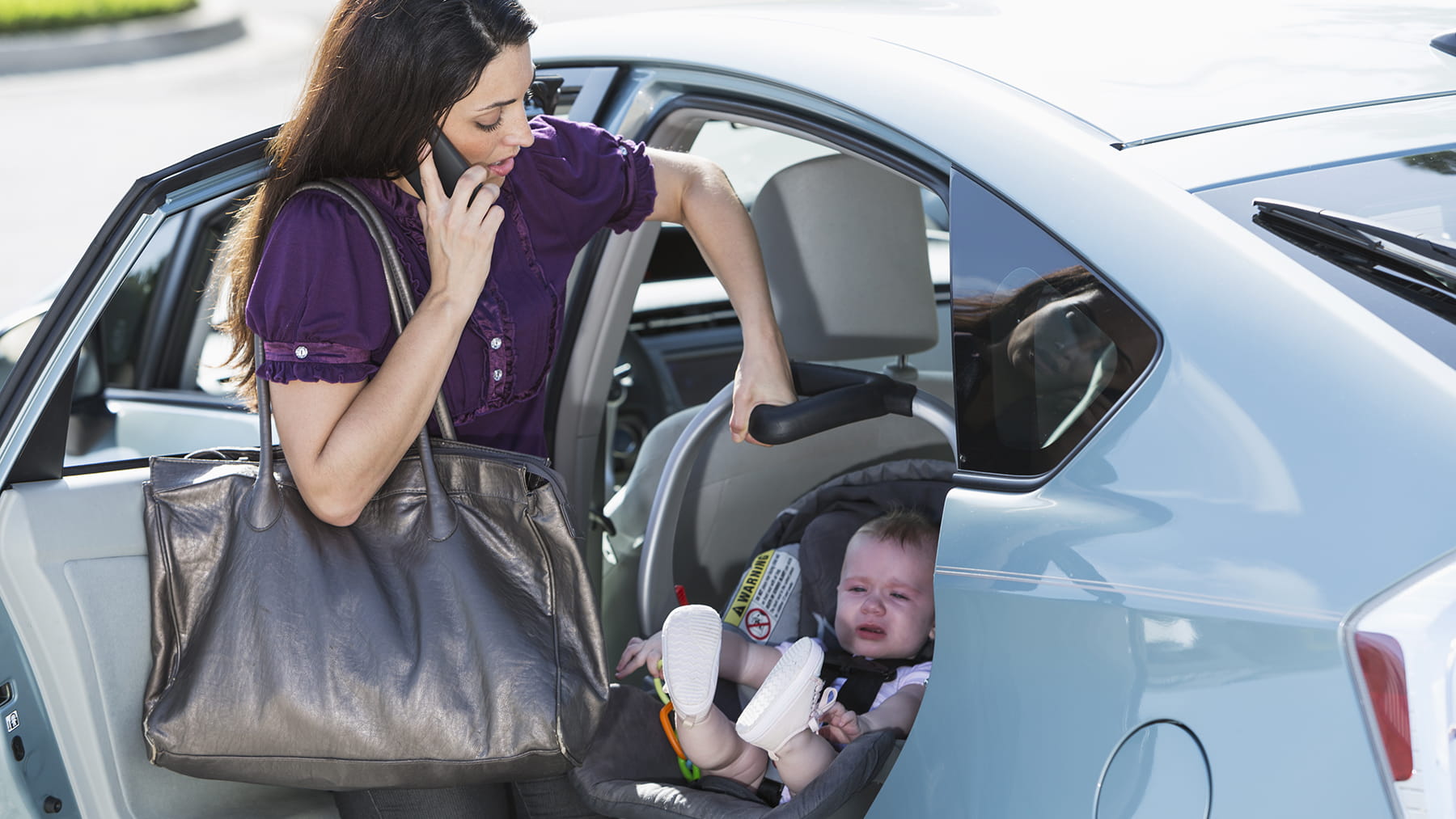How to avoid new-parent injuries

Becoming a parent can strain finances, patience and social lives. Just as common, though, is parenting’s strain on the body.
As a new parent, taking care of yourself is important not only to keep yourself healthy, but also so that you remain physically able to care for your child.
Luckily, avoiding a repetitive strain injury can be easy once you learn the proper ways to perform common tasks. We’ll show you how and why to use the correct form for each activity.
Keep in mind
Body posture and awareness of weight distribution are the keys to avoiding injury.
- Carry loads close to the body and centered, rather than off to one side.
- Bend at your knees – not at your back.
- Make multiple trips to and from the car if you have several bags.
Carrying an infant car seat
What to do: Lift with two hands, if possible. Carry the car seat in front of your body. Try looping your whole arm through the handle rather than lifting it with one hand.
What not to do: Avoid carrying the seat on one side of your body. Avoid lifting and carrying with one hand, which puts a lot of weight onto your wrist.
Holding a child while standing
What to do: When holding the child on one side of your body, shift frequently from one side to the other to avoid straining one side disproportionately. Keep your core muscles tight. With every position, aim to stay evenly balanced.
What not to do: Try not to let your knees lock; use your muscles to support your body. Avoid holding any one position for a long period of time.
Lifting and holding a child
What to do: When lifting from the floor, bend at your knees and try to move the child in toward your body before you lift. This is tougher when lifting a child from a crib, but try to get them as close to you as possible before lifting them out.
When lifting and holding a child, keep your wrists in a straight, neutral position – think of a handshake.
What not to do: Avoid relying on your lower back muscles, and instead try to engage your core, leg and arm muscles to lift. Avoid bending or twisting your wrist to lift, hold or maneuver the child.
Changing diapers
What to do: Be cognizant of the surface where you’re changing the baby. Ideally, the surface you’re using will allow you to stand fully upright during changings.
What not to do: Avoid creating diaper-changing setups that force you to lean forward and put extra strain on your back muscles. Some playards, for example, have changing table attachments, but it’s likely better for you to use a full-height changing table when available.
Breastfeeding or bottle-feeding
What to do: Maintain an upright posture, keeping your shoulders back, in a chair with plenty of lumbar support. Armrests and/or a feeding pillow can provide some extra support. If you’re bottle-feeding, switch sides, as you would if you were breastfeeding.
What not to do: Try not to hunch forward or feed the baby in a chair that doesn’t provide much support. Avoid feeding a baby consistently on one side or the other – you’ll be less likely to overuse the muscles on one side of your body, and the baby also benefits from equal time lying on each side of their body.
Getting a child into a car seat
What to do: The good lifting mechanics mentioned earlier will also apply when it comes to lifting a child into their car seat.
Consider, too, where to place the car seat in your car. The American Academy of Pediatrics typically recommends that car seats be installed in the middle of the back seat when possible. However, car seats can be placed safely on either side of the back seat, especially if that placement means you’re less likely to injure yourself while buckling them in. A child passenger safety technician can help determine the safest possible car seat configuration.
What not to do: As mentioned earlier, avoid lifting with your lower back or bending or twisting your hands in a way that puts more weight on your wrists. Also avoid twisting your back while lifting.
Why proper form is important
It’s easy to strain a wrist, shoulder, neck or back, especially, when you’re lifting or holding too much weight on individual muscles. These strains have the potential to become worse, turning into muscle, tendon or ligament tears.
Repetitive strain injuries often can be treated with rest, but you may benefit from physical therapy and at-home exercises, medication or even surgery, depending on the injury’s severity.
If it feels like you’ve experienced an injury, try resting and icing the affected area for three days. If you’re still experiencing significant pain and/or limited movement after three days, reach out to your doctor for further treatment options.
Kelly Henschen is physical therapist at The Ohio State University Wexner Medical Center’s Outpatient Care Gahanna.




